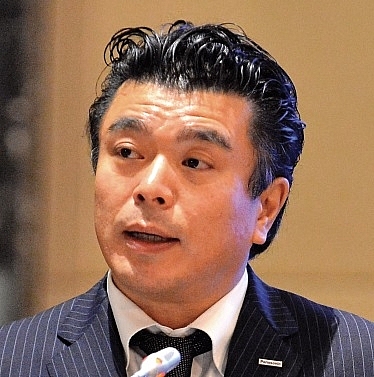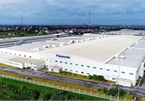Attracting these relocated projects will be factors that reaffirm Vietnam as a safe and open destination. Marukawa Yoichi, general director of Panasonic Vietnam, talked about the plan to move its facility from Thailand to Vietnam.
 |
| Marukawa Yoichi, general director of Panasonic Vietnam |
What has Panasonic done so far to relocate the manufacturing facility from Thailand to Vietnam?
This transfer is a part of global restructuring of our manufacturing. Producing and supplying products from Vietnam to individual markets will be more advantageous than continuing production in Thailand.
As of now, Panasonic has poured $243 million in eight companies in Vietnam, five of which are manufacturing companies located in Hanoi’s Dong Anh district, Hung Yen, Ho Chi Minh City, and Binh Duong.
According to the relocation plan, the large-capacity refrigerator manufacturing line will be moved to Panasonic Appliance Vietnam in Dong Anh, and the large-capacity washing machine with vertical door manufacturing line will be moved to Hung Yen Branch of Panasonic Appliance Vietnam. Actual relocation will be started soon.
Panasonic said that it will take advantage of existing facilities in Dong Anh and Hung Yen province to serve for its expansion plan. How does Panasonic achieve this?
In the beginning, Panasonic expects to take advantages of the existing factories and manufacturing facilities in Dong Anh district and Hung Yen, through improving the productivity and capacity of existing production lines.
Depending on the business situation, Panasonic may have to plan further expansion of our factory and manufacturing capacity in the future.
Thailand is considered to have advantages in terms of supporting industries, so why did the company still decide on Vietnam?
In fact, supporting industries are one of the important factors for our manufacturing. But it is not only one reason. Vietnam has a lot of advantages. Also, Vietnam is one of the most high-potential markets in the ASEAN, so that must affect our decision.
Besides that, the supporting industries in Vietnam have been improved recently. Amid the movement of global factories and investment to Vietnam, we think the country is in a perfect position to boost its capabilities of supporting industries, along with improving logistics capabilities.
We think that despite challenges, there are also many opportunities for local suppliers to grow and catch up market demand.
The localisation ratio at Panasonic Vietnam Group is approximately 30 per cent. We cannot disclose the number of local suppliers, but we can say that we have increased our localisation ratio in recent years, and we will try our best with the local working group and suppliers to strengthen capacity of Vietnam’s supporting industries.
Does Panasonic’s relocation plan from Thailand involve support from the $2.23 billion package offered by the Japanese government to back up Japanese businesses in expanding their supply chain outside of China?
This transfer is a part of global restructuring of our manufacturing to provide more competitive products to potential markets, and is not related to COVID-19.
On the other hand, the purpose of monetary support which the Japanese government announced is to enhance supply chains to be ready for global crisis such as the current pandemic. So, our decision and direction is not directly related to the government policy in this case. VIR
Kim Oanh

Panasonic to move Thai-based production to Vietnam
Japanese appliance-maker Panasonic on May 21 said that next year it will move its Thai-based production of refrigerators and washing machines to Vietnam, laying off some 800 workers.

Is Vietnam ready to receive new FDI wave after Covid-19?
Prof Nguyen Mai, an expert on FDI, and chair of the Vietnam Association of Foreign Invested Enterprises (VAFIE), pointed out three problems in the picture of FDI in Vietnam.